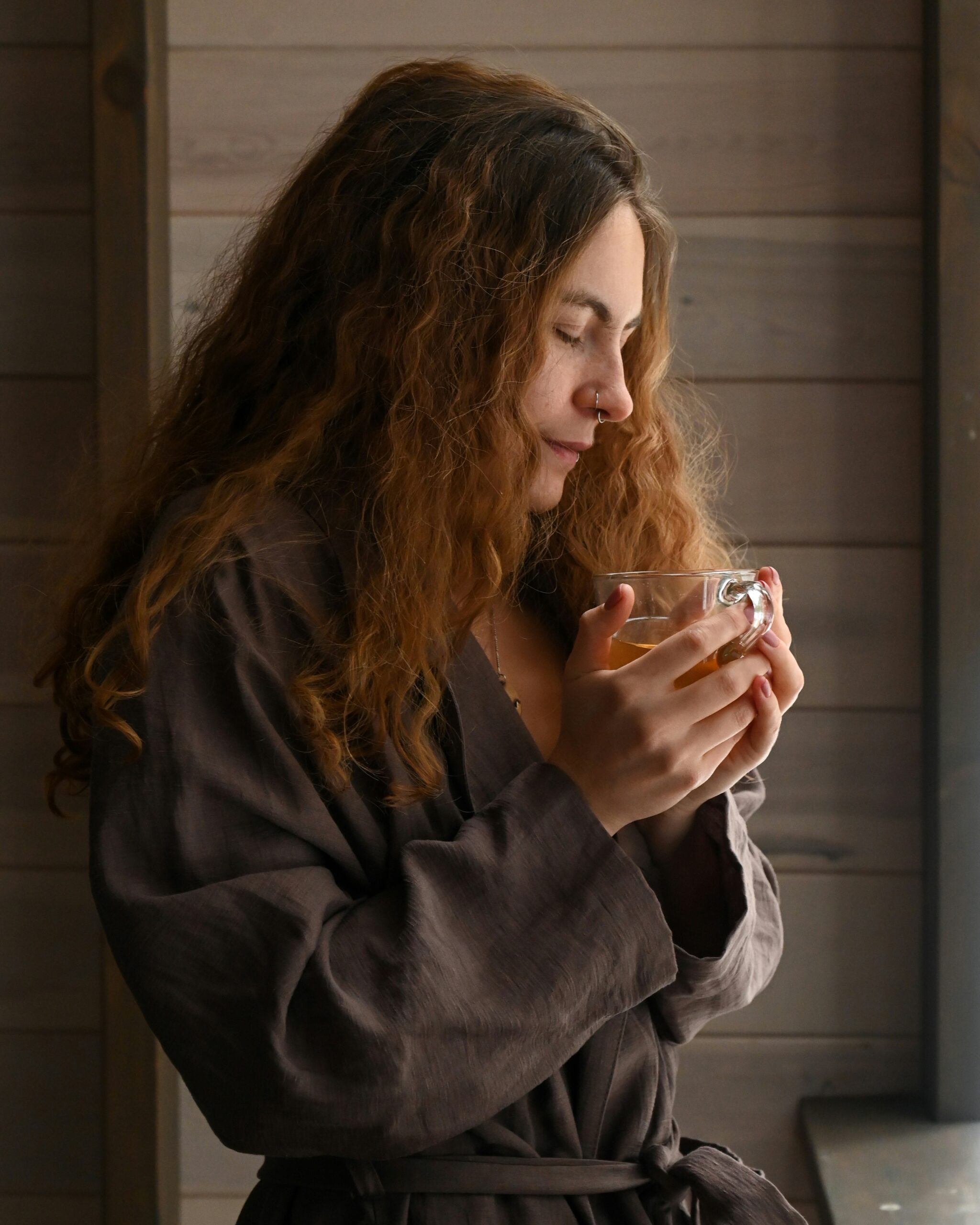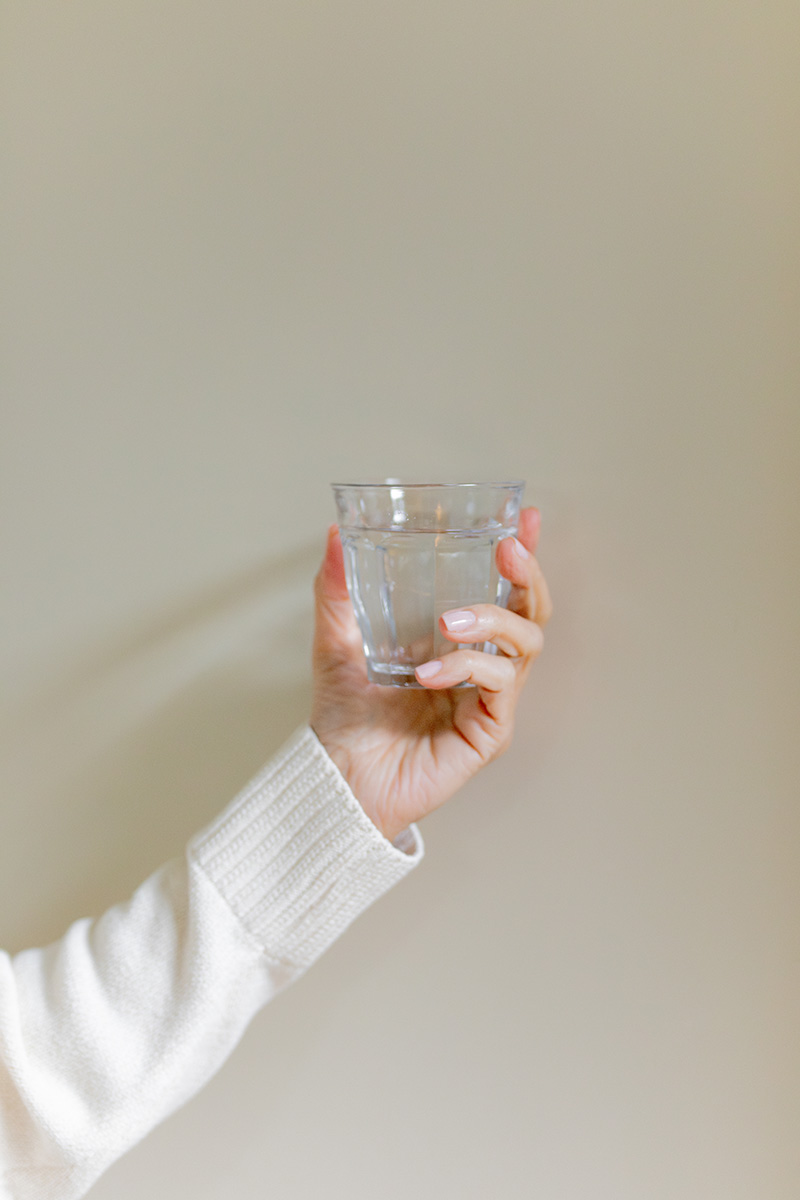
The Benefits of Cold Plunges For Mental Health
If you’re anything like us, you’ve probably been hearing about cold plunging lately. Influencers on social media immerse themselves in freezing cold water in order to recover after a workout session or just to clear their minds. The hashtag #coldplunge has over one billion views on TikTok, and celebs like Harry Styles, Lizzo, Hailey Bieber, Lady Gaga, and many more have been spotted hopping on the trend.
But how beneficial is this wellness fad, actually? And who is it best for? It turns out that it’s not just used for physical recovery, but for mental health, too. I dove into some research and interviewed a few experts to learn more.
What Is Cold Plunging?
Cold plunging, or cryotherapy, involves submerging the body in cold water for short periods of time—this can look like a cold shower, a swim in a cool ocean, or using a specialized cold plunge tub. Some athletes use cold plunging to promote physical recovery. In fact, humans have used cryotherapy for centuries in various forms, for various therapeutic benefits.
“Cold plunging, or cryotherapy, involves submerging the body in cold water for short periods of time”
Today, the practice has been popularized in its more intense forms by public figures like Wim Hof, a Dutch extreme athlete also known as The Iceman, or actor Chris Hemsworth, who recently swam without a wetsuit in the Arctic for his Nat Geo series.
“Clinically, I’ve found that cold immersion therapy helps all patients who are engaged in rigorous intense workouts of more than an hour,” for reducing inflammation and soreness, says Dr. Mark Slabaugh, MD, sports medicine and orthopedic surgeon at Mercy Medical Center in Baltimore. But what about the mental benefits?
Cold Plunging For Mental Health?
“When exposed to cold temperatures, the body responds by releasing endorphins, which are hormones that act as natural painkillers and mood enhancers,” says Okon Antia, a doctor of physical therapy and founder of Campus Motion Physical Therapy in Texas.
While cold plunging can give you an immediate mood boost, it can also have some more long term effects, like stabilizing the body’s stress response.
“Each plunge into the cold is like a mini-stressor for our body,” explains Phillippa Quigley, a certified holistic health and wellness coach, “and over time … our body becomes better equipped to handle stress in general.”
Quigley said she was skeptical when she first heard about cold plunging, and while it’s not for everyone, she experiences great benefits.
“I remember the first splash—it was like a million icy pins pricking my skin,” she says, “but the mental clarity and peace that followed it was unlike anything I’ve experienced … like a gust of fresh air had swept through the cobwebs of my mind.”
Ryan Duey, co-founder of Plunge, also notes the mood-boosting and mind-clearing effects of a cold plunge.
“Taking the plunge builds mental toughness and discipline,” he says. “It’s like a mind-training workout, pushing you out of your comfort zone and teaching you to handle the uncomfortable.”
“It’s like a mind-training workout, pushing you out of your comfort zone and teaching you to handle the uncomfortable.”
A recent 2023 study found that short-term cold plunging may have positive effects on mood and brain functioning, and a 2008 study found that in one small group, cold showers reduced symptoms of depression. More conclusive research is still needed, but Antia notes that, while the research regarding cryotherapy’s effect on stress levels is limited, it’s promising.
Note that while folks might see benefits from cold plunges, it shouldn’t be considered a replacement for seeing a therapist or seeking out mental health professionals. “If a person is experiencing anxiety or depression that is interfering in their daily lives, it’s important that they seek mental health treatment,” says Dr. Jay Serle, LMFT, clinical director at the Ohana Addiction Treatment Center.
The Risks Of Cold Plunging
While cold plunging doesn’t come with much of a risk for healthy individuals, anyone with any sort of medical condition should consult their doctor before taking the plunge. Risks are especially pronounced for folks with cardiovascular problems, like high or low blood pressure or other heart issues. “The shock of cold therapy could cause palpitations” or other cardiac complications, says Slabaugh.
Even in healthy people, cold plunging comes with a risk of increasing blood pressure or causing shock. You can also risk frostbite or hypothermia if your exposure is too long, so just a few minutes is long enough for a cold plunge, especially if you’re just starting.
How To Cold Plunge At Home
It’s important to start small. Duey recommends starting with shorter plunges up to two minutes and working your way up.
You don’t have to immediately jump into a bucket of ice water, either. Slabaugh recommends “starting with warmer water of around 60 degrees and staying immersed for a shorter period of time,” while Quigley suggests starting with a lukewarm shower and gradually reducing the temperature over time.
“While the benefits of cold plunging are promising, it may not suit everyone,” says Quigley. If the thought of taking a cold plunge is a huge ‘no’ for you, but you’re still interested in the potential health benefits, consider staying around that cool, 60-degree range, and you’ll still likely experience a reduction in stress and a boost in energy.
“If your doctor says it’s safe, go ahead and try out the plunge, but start with just a cool shower, or a dip into a cool (but not too cold) body of water.”
Here’s a good rule of thumb for determining your perfect temperature—in this Instagram post, fitness and hormone coach Misty Myler notes that if your body temperature doesn’t regulate within ten minutes of exiting a cold plunge, the temperature was either too cold or the duration was too long.
And if you’re heading into nature to take the plunge into a freezing cold body of water, make sure you bring a friend (or a whole crew à la Chris Hemsworth). Moreover, don’t dive headfirst into freezing water—the cold shock can activate your gasp reflex, putting you at risk of drowning.
The bottom line? If your doctor says it’s safe, go ahead and try out the plunge, but start with just a cool shower, or a dip into a cool (but not too cold) body of water. You can also try an ice bath tub as well. You don’t have to go fill a bucket up with ice cubes—the water doesn’t have to be one degree above freezing to give you a bit of a mental boost.
Natalie Gale is a Boston-based freelance journalist. When she’s not writing about art, food, or sustainability, you can find her biking to the farmers’ market, baking, sewing, or planning her next Halloween costume. Say hi on Instagram!




